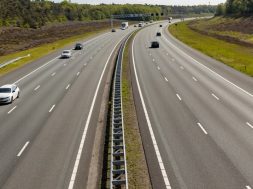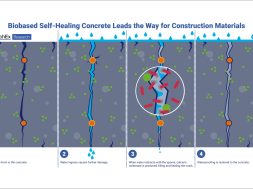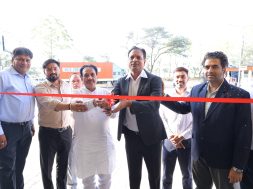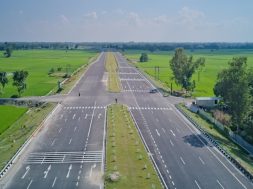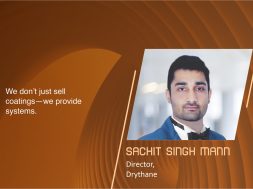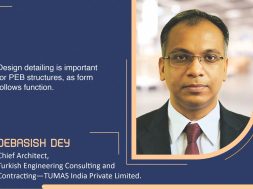Eternia focuses on durable fenestration for skyscrapers

Nehal Bazari, Head-Marketing & Digital, Eternia (Hindalco), Aditya Birla Group, discusses Eternia’s ideas for skyscraper fenestration systems that are durable, energy-efficient, and sleek, in response to India’s changing environment.
Can you throw some light on the fenestration requirements for high-rise buildings?
High-rise buildings’ fenestration needs are complex and difficult due to their excessive altitudes. These structures’ windows must be able to withstand extreme winds, including cyclones. Simultaneously, they must maintain water resistance to prevent leaks and seepage, which are aggravated by strong winds at height. As buildings get taller, noise insulation becomes increasingly important. Thermal efficiency and tolerance to seismic activity are also important factors. Modern architectural trends that encourage wider views and larger window sizes amplify these needs.
Furthermore, there is a rising preference for slim window profiles that retain structural strength despite their minimalist appearance. To achieve these different requirements, high-rise buildings must install WiWA-certified windows composed of Duranium, an aluminium alloy noted for its strength and durability. Furthermore, energy efficiency is a primary goal, with a special emphasis on reducing air permeability to prevent energy leakage.
What are the major challenges associated with designing fenestration systems for high-rise buildings?
Designing and implementing windows with vast vistas and natural light while maintaining structural integrity and energy efficiency can be tricky. High-rise structures have more intense weather conditions on top levels, necessitating fenestration systems that can survive strong winds and heavy rainfall while maintaining slender, beautiful designs. Ensuring energy efficiency is another difficulty, as huge glass surfaces can cause heat gain or loss.
Maintaining air tightness and preventing energy loss gets more challenging as building height increases. Noise reduction is considerably more difficult in high-rise buildings due to the increased exposure to external noise sources. Windows composed of Duranium, an aluminium alloy, can help reduce these issues.
Can you walk us through the recent fenestration trends in India? What are your recommended fertilisation systems for a climate like India’s?
India’s fenestration trends are rapidly changing, owing to shifting customer demands and harsh weather. There is an increasing need for larger windows with slimmer profiles in high-rise structures, as people prefer wide views and enough natural light. The demand for openness and aesthetics is transforming how people experience indoor places. However, the changing climate in India is posing a challenge to these design preferences. Cyclones that are more frequent and violent, with more rain and stronger winds, are putting windows to the test. There is currently a high demand for windows that are both beautiful and extremely durable.
Wind resistance has become critical, with windows required to withstand cyclonic pressure. Water resistance is also useful for preventing leaks and seepage after heavy storms. To satisfy these demands, advanced materials such as duranium, an aluminium alloy, are becoming increasingly popular. They provide the strength to withstand adverse weather while maintaining sleek, attractive profiles. Companies such as Eternia manufacture WiWA-certified windows that combine durability, weather resistance, and energy efficiency with modern, elegant designs.
What are some of the latest technologies in fenestration that focus on enhancing energy efficiency in high-rise buildings?
Some of the most recent fenestration innovations include the use of innovative materials such as deranium, an aluminium alloy created by Hindalco Engineers that allows for narrow profiles while maintaining strength and energy efficiency. Energy-efficient designs with low air permeability scores are prioritised to reduce energy leakage. Smart technology integration is also highlighted as a trend, and this could include features such as automated shading or climate control systems.
There is also a growing use of double-glazed windows, which inhibit heat convection in rooms, keeping them cool in the summer and warm in winter. Such windows are also highly soundproof, reducing noise within rooms. Furthermore, WiWA (wind, water, and air) certification ensures resistance to adverse weather while preserving energy efficiency. These solutions could prove useful in towering structures where energy control is critical.
For more details, visit: https://www.hindalco.com/our-businesses/hindalco-brands/eternia
Cookie Consent
We use cookies to personalize your experience. By continuing to visit this website you agree to our Terms & Conditions, Privacy Policy and Cookie Policy.


